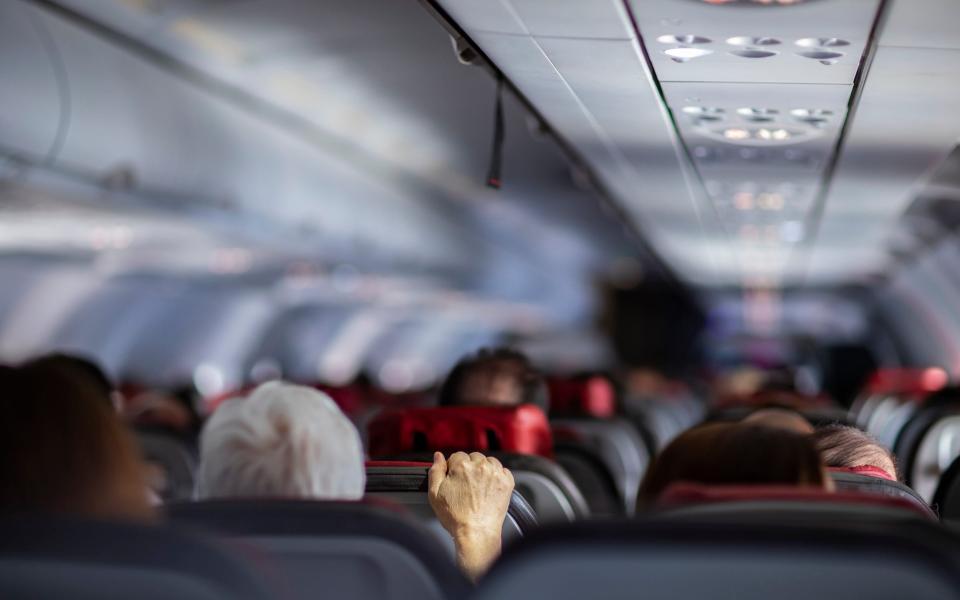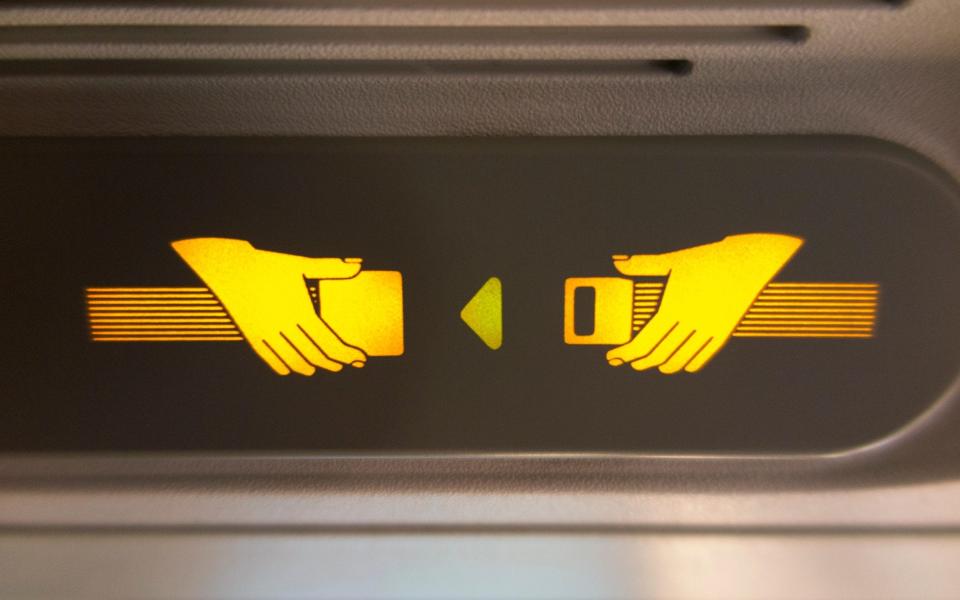At least one person has been killed and dozens of others injured after a flight from London to Singapore encountered severe turbulence. The Singapore Airlines flight had to divert to Bangkok after a passenger was killed and thirty people were injured.
It follows several other high-profile incidents in recent years. Three passengers on a Hawaiian Airlines service to Sydney were hospitalized in June 2023 after the flight experienced severe turbulence. Photos taken by those on board showed broken ceiling panels and dangling oxygen masks.
In March 2023, seven passengers were hospitalized after their Lufthansa flight from Austin to Frankfurt encountered severe turbulence. As the plane plummeted, actor Matthew McConaughey, who was on board with his wife Camila Alves, reported feeling “a huge shock.” A widely circulated TikTok video shows trays, food and bedding being scattered around the cabin in the aftermath.
In the same month, passengers on a Tui plane bound for Manchester from Tenerife were reportedly offered advice after it was caught in Storm Larissa and forced to make an emergency landing in East Midlands. And in December 2022, a flight from Phoenix to Hawaii made a hasty descent after six people were seriously injured during another bout of severe turbulence.
While these incidents are extreme and turbulence-related injuries – let alone deaths – are rare, bumpy rides may become increasingly common. According to projections by researchers at Reading University, led by Professor Paul Williams, incidents of clean air turbulence (sudden, severe turbulence in the absence of clouds or storms) could increase significantly between 2050 and 2080 due to increasing wind instability and increasing rough air caused by climate change.

This type of turbulence is undetectable by radar and incidents often come “out of nowhere,” says meteorologist Jim Dale. “And turbulence at higher altitudes can occur over large areas and be difficult to avoid and/or negotiate.”
But even as turbulence increases, technologies also improve. An algorithm developed by Williams to predict turbulence strength up to 18 hours in advance is now used by the US National Weather Service in its forecasts and he is also working with Airbus to make its planes more resilient in the future.
“They’ve been in touch with a lot of questions that we’re trying to answer,” he said. “Due to the long lead time in the life cycles of aircraft designs, the aircraft that will fly in the second half of this century are currently in the design phase. We need to ensure that the ability to withstand much more turbulence is built into the design standards.”
Is there a way to avoid turbulence?
For now, some flights are definitely bumpier than others. Eight of the 10 most turbulent of 2022 were internal flights in Japan, according to data from turbulence forecasting website Turbli, which analyzed 150,000 routes.
“Turbulence has three main causes,” explains the site’s creator, Ignacio Gallego-Marcos. “One comes from jet streams, which resemble high-velocity air currents in the upper atmosphere. One of them is mountain waves, so where you have the Andes or the Rockies they cause turbulence. The others are thunderstorms: these are usually strongest near the equator, so you can expect some activity there. In the case of Japan, there is a lot of jet stream activity and it is also a mountainous country.”
Other well-traveled routes can also pose problems. Transatlantic flights are known to experience mild to moderate turbulence, thanks to the unpredictable weather over the ocean caused by the strong jet stream. And five of Europe’s bumpiest short-haul flights originate in Zurich, according to the Turbli data, possibly because they cross mountain ranges.
To avoid the most unpredictable weather, some experts recommend taking night or early morning flights, when the sun’s heat is less likely to affect weather patterns. Gallego-Marcos, however, is skeptical. “That might be the case for thunderstorms. If you were close to the equator during the hot phase, you could expect more thunderstorms. But there is no recipe for jet stream or mountain waves.”
What should I do if turbulence occurs?
One solution is to choose a plane that handles bumps better. Gallego-Marcos recommends the Boeing 787-9 and Airbus A340 for less shaky flights. “You have to consider the weight divided by the wing area – that’s called the ‘wing load’ and is the most important factor,” he says. “The greater the ratio, the smoother the flight.
“Even though big planes like the Airbus A380 and the Boeing 747 weigh a lot, they actually have big wings, so they can be shaken by turbulence more easily than the 787 and the A340. The A340 actually has the highest wind load of all, but the 787 has more advanced systems for dealing with turbulence, so that is my first choice, although it is difficult to choose between them.”
Whichever plane you end up on, choose a seat where the effects of turbulence are less dramatic. Traveling in the center of the plane (near the wings and center of gravity) makes for a less bumpy ride, while a seat in the back will be the rockiest.


“I used to avoid working at the back of the plane because it’s the worst,” says Jane Hawkes, who worked as a flight attendant before becoming a consumer champion. “If you are someone who is likely to be concerned about turbulence, speak to the crew when you board the plane and see if they can help you with anything further.”
There’s a reason cabin crew also tell passengers to fasten their seat belts: if turbulence hits without warning, you’re less likely to get hurt.
Similarly, and in the wake of last year’s Lufthansa incident, the American trade union AFA (Association of Flight Attendants) renewed its call for a ban on lap babies, arguing that the practice is particularly unsafe during severe turbulence and that small children would be dangerous. better in a safety seat with the right safety features.
Can I claim compensation for turbulence?
You certainly don’t get any money just because your flight hits a bumpy spot. However, if you are injured and it can be proven that the airline acted negligently, you may be able to make a personal injury claim.
“If you don’t get enough warning to sit down and strap yourself in, you may be eligible for general and/or special damages under the Montreal Convention if you are injured as a result,” says Hawkes. “In addition to cases of delay, damage or loss of baggage, the Montreal Convention also establishes the liability of airlines in the event of death or injury to passengers.”
Am I right to be concerned?
Don’t try to be that. The National Center for Atmospheric Research says about 5,500 cases of severe turbulence are reported by U.S. pilots each year. That number is less than the number of flights operated daily by American airlines: 5,670 according to figures from the FAA (Federal Aviation Authority).
If you’re a nervous flyer, Hawkes recommends “asking to see the cockpit [before the flight] and speaking to the flight crew. They will answer any questions you have.”
She underlines the training pilots receive to deal with all eventualities. “These are extremely well-trained professionals. Every six months they have to go on a flight simulator. They have scenarios with turbulence and how they deal with it. Even doctors are not tested that often.”
This article was first published in July 2023 and has been revised and updated